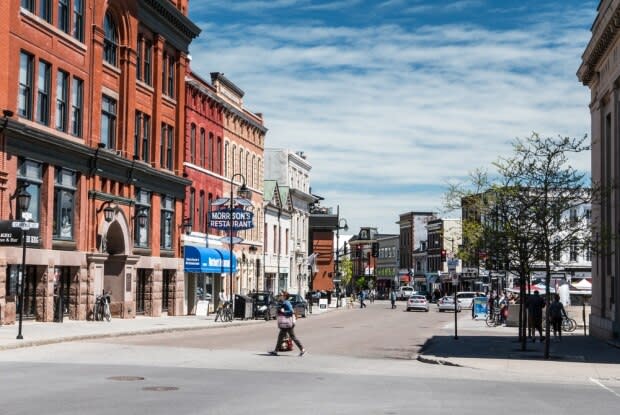Kingston urged to rise to challenge of growing population
The chief planner in Kingston, Ont., is calling for a new building policy that looks up rather than out as the eastern Ontario city scrambles to house a rapidly growing population.
Most buildings in central Kingston are no taller than three or four storeys, a feature many residents and visitors find charming. But Paige Agnew, the city's director of planning, building and licensing, says it's time for a rethink.
This is about developing a strategy for how we're managing our growth. - Paige Agnew, City of Kingston
"This is about developing a strategy for how we're managing our growth, and how tall and mid-rise buildings need to function to be successful in the city," Agnew told CBC Ottawa's All In A Day.
The city projects it will need to build more than 13,000 additional housing units over the next 30 years to handle the growth.

The new policy would set out specific criteria for evaluating development applications for buildings taller than four storeys, focusing on what's known in planning circles as "smart growth" — development with a focus on density, access to public transit and environmental sustainability in a city that declared a climate emergency in March.
"If we're having people live in areas of the city that aren't supported by transit, that aren't supported by walkability, what is that doing with respect to our climate change goals?" Agnew asked.
A discussion paper titled Density by Design floats the idea of a "green light" strategy that would divide Kingston into several sections, making it easier for builders to obtain approvals in areas deemed ripe for development, according to smart growth principles.
Agnew said this would also help avoid a "one-size-fits-all" development policy.
"We have a city that's very rich in heritage culture and heritage built form," Agnew said. "What we've tried to do is look at sub-contexts for the city so that we're not applying only one set of policies uniformly everywhere, when clearly there's different areas of the city that have different contextual considerations."
'Robust discussion' anticipated
Agnew said current guidelines suffer from a "lack of clarity," which leads to confusion among developers and city planners when they consider applications for new buildings.
Agnew said she expects there to be robust discussion over where taller buildings can go.
"Part of the conversation that we're having this week with the community, and over the next month, is really trying to get feedback on what people's perspectives are about height in the downtown in particular," she said.
The city is holding an open house on Thursday where the public can offer their opinions on the new policy. Residents also have the opportunity to comment online until the end of the year.

